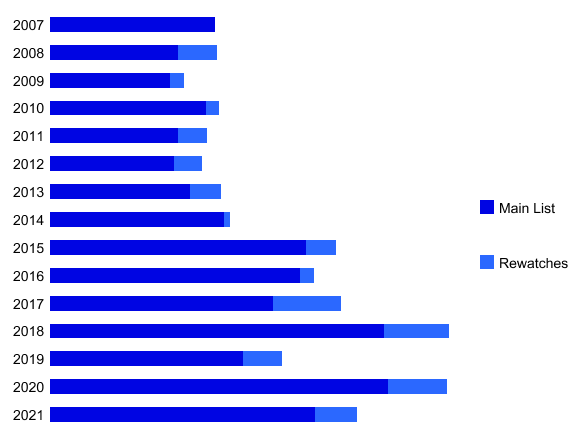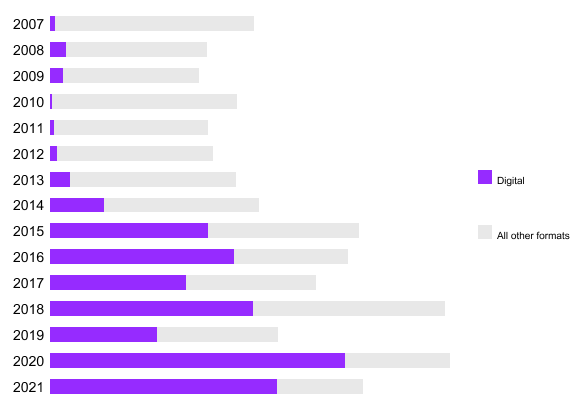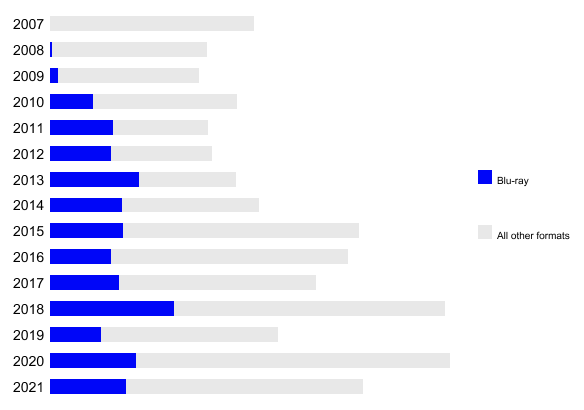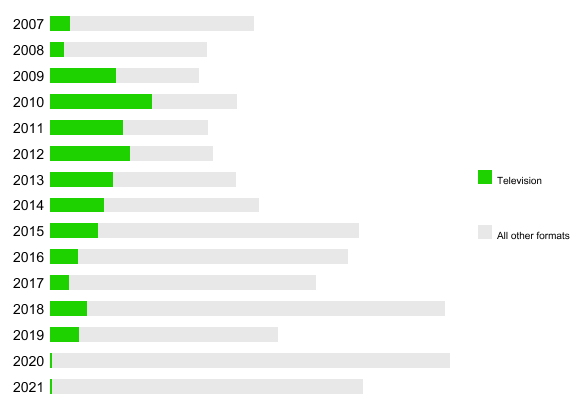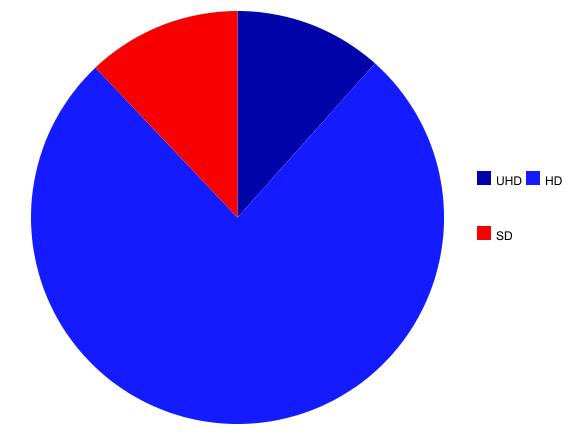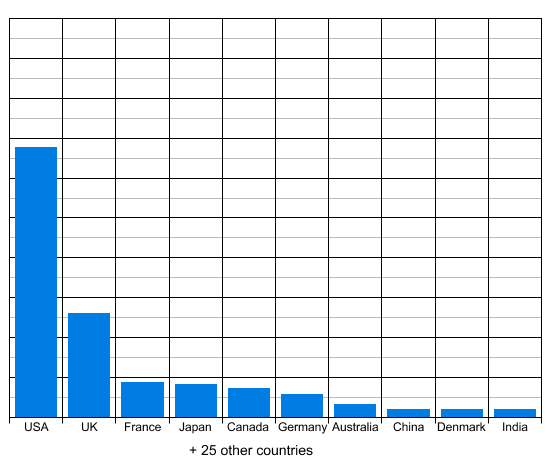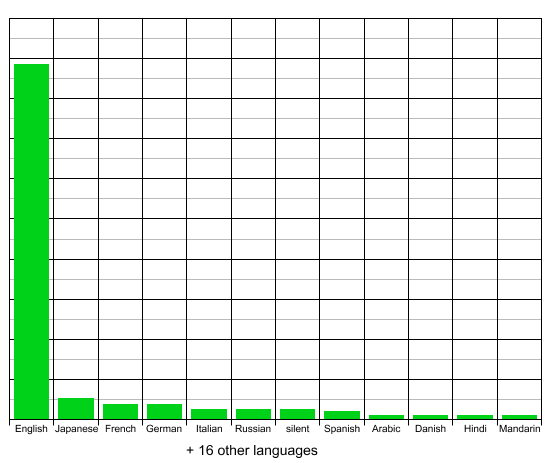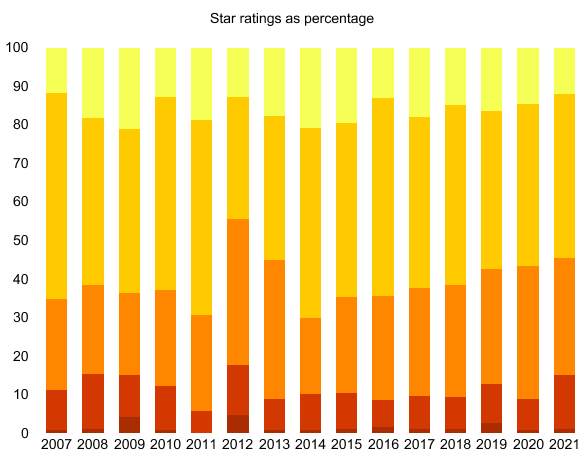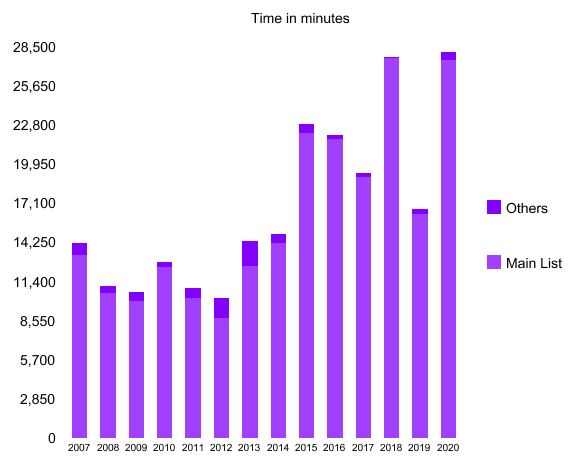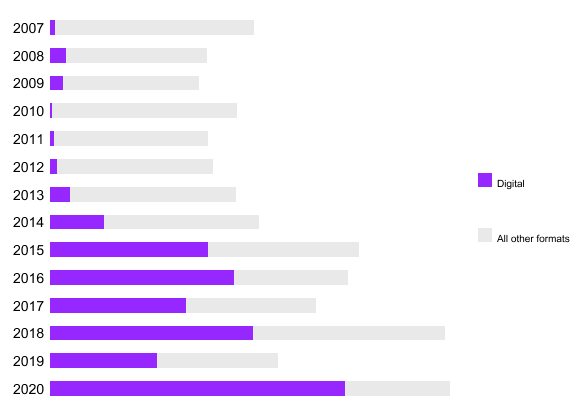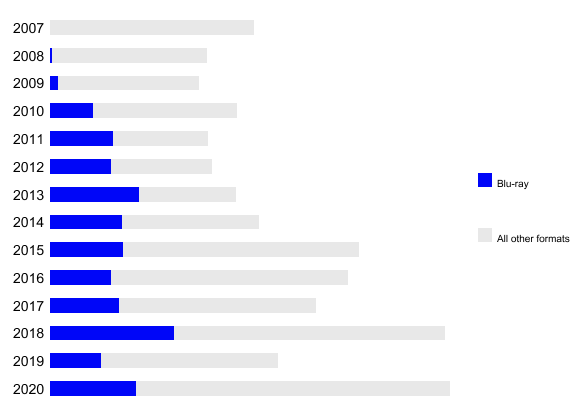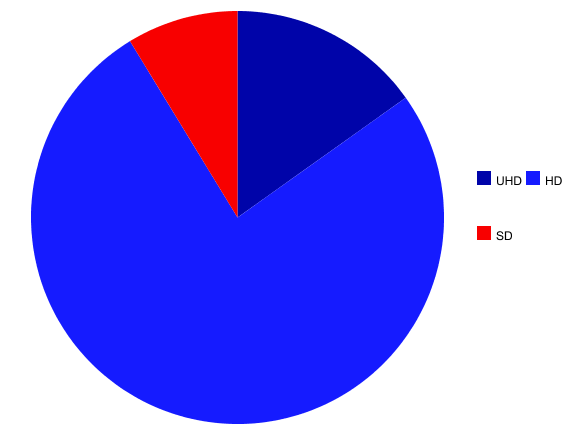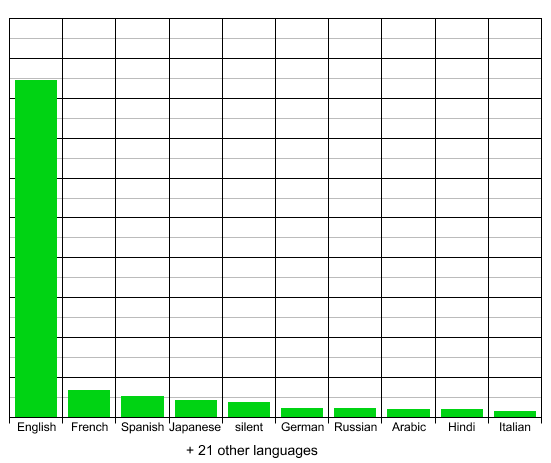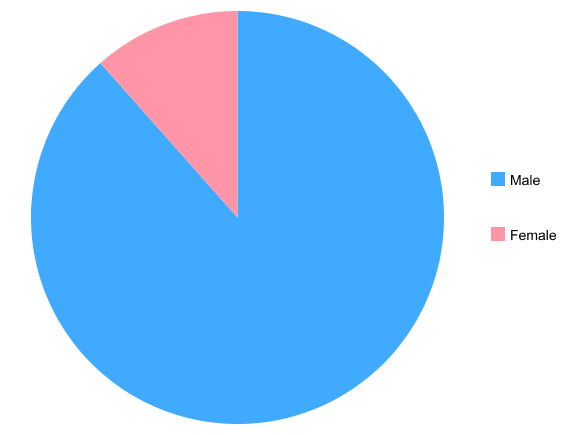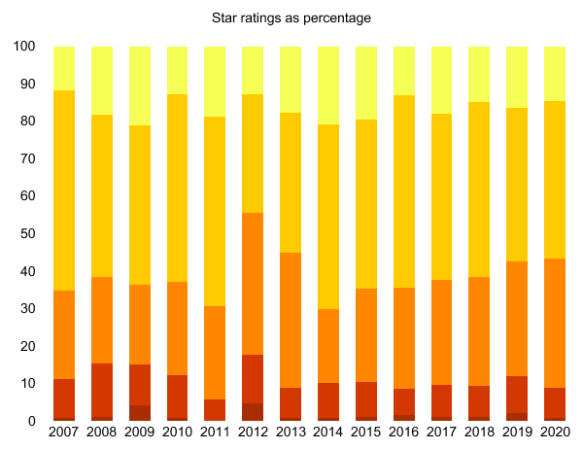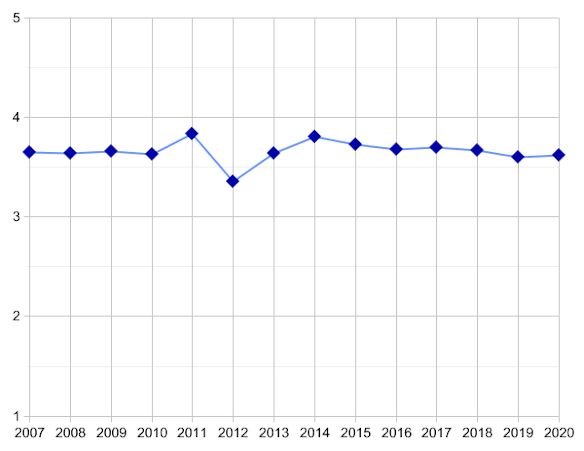Here we are again: the best bit of the year — the statistics!
As was the case last year (and will surely remain so going forward), these haven’t been fiddled with to fit with my new-format Challenge, but instead continue to encompass all of my first-time watches from the past year (as listed here). That’s just the way I like it (in part because it means I can compare across the years, whereas switching to a Challenge focus would basically be starting again).
Before the onslaught of numbers and graphs, I’ll just mention that, because I’m a Letterboxd Patron member, I get a yearly stats page over there too, which can be found here. In some places that’ll look a bit different to this one, because I also log whatever TV I’m allowed there; but it does have some interesting additional and alternative stats, like my most-watched and highest-rated stars and directors. So, if you love this stuff as much as I do, be sure to check out the extra goodies there at some point.
And with that said, it’s on to the main event…
I watched 103 feature films for the first time in 2023, which is my lowest final tally in over a decade (you have to go back to 2012’s 97 for less). It snuggles in between the handful of years in which I reached exactly 100 and 2013’s 110 as my all-time 5th lowest year (out of 17).
Of those 103 films, 67 counted towards my 100 Films in a Year Challenge. Alongside 25 rewatches, that means I totalled 92 films for my Challenge — sadly falling short of the goal of 100 for the second year running.
Outside of the Challenge, I rewatched a further three films, for a total of 28 rewatches. That’s somewhere in the middle of the pack — my 7th best year ever for rewatches, which also makes it my 10th worst.

NB: I have no rewatch data for 2007 and only incomplete numbers for 2008.
Here’s how that viewing played out across the year, month by month. The dark blue line is my first-time watches and the pale blue is rewatches. As is usually the case, my viewing month to month is wildly unpredictable.
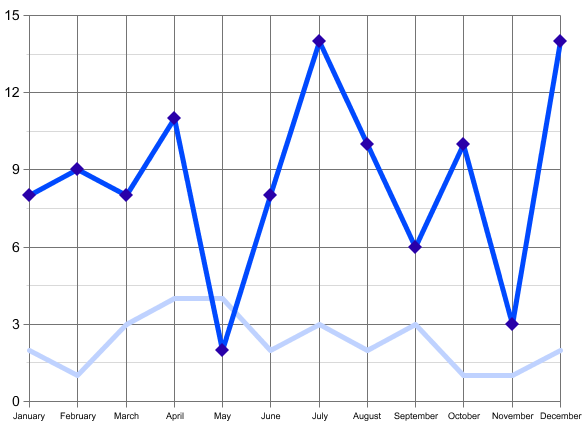
I also watched 15 short films in 2023. (Those don’t count in any statistics, with the sole exception of the version of the total running time that expressly mentions them.) That’s only the third time my shorts count has been in double figures, sitting behind 2019’s 20 and 2020’s festivals-driven whopper of 65.
The total running time of my first-watch features was 173 hours and 11 minutes. That’s my lowest since 2012, which makes sense when you remember the stat from the first paragraph. Add in the shorts and the figure rises almost 2½ hours to 175 hours and 33 minutes, though you still won’t find lower since 2012. (In the graph, I would also include any alternate cuts I watched for the first time in that “others” block, but there weren’t any this year.)

On to formats now, and the big news (if you can call it that) isn’t what’s #1, but what isn’t here: I didn’t watch a single film on TV in 2023, the first time that’s happened in the history of the blog. TV was once my dominant format, making up over half my viewing in 2010, and the largest portion in 2009, 2011, and 2012, but tailed off thanks to the rise in streaming. It’s also a personal thing: its number of films was still in the 20s as recently as 2019, but then I got rid of Virgin Media and its easy recordability, and the number went off a cliff. But I won’t lament it too much, because there’s always a chance it’ll return — unlike, say, VHS, which still accounted for five films back in 2007 and two in 2008 before disappearing entirely.
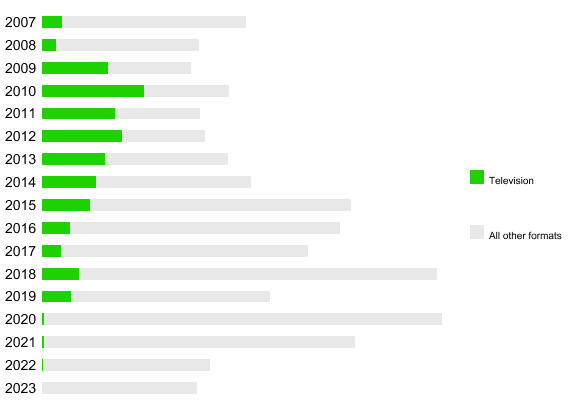
As for what is #1, that’s not really news at all: it’s digital again, with 60 films — though at 58.25% of my viewing, that’s its lowest percentage since 2019. My streaming viewing had been hovering around 50% from 2015 to 2019, but then suddenly darted up to almost 74% in 2020. I know most would blame the pandemic for that kind of thing, but during lockdown I still had all my many, many Blu-rays, so I don’t really know why that happened. It dropped marginally to 72.5% in 2021, then a little more to 69.4% last year, but a fall of over 10% is… well, I approve. Maybe it’s silly to look at it that way — I mean, this is my own viewing: I could ban myself from streaming anything if I wanted to — but I kind of just watch what I want to or feel like, then look at these numbers in retrospect. With that in mind, I continue to want to see Blu-ray do better, and this is a step in the right direction.
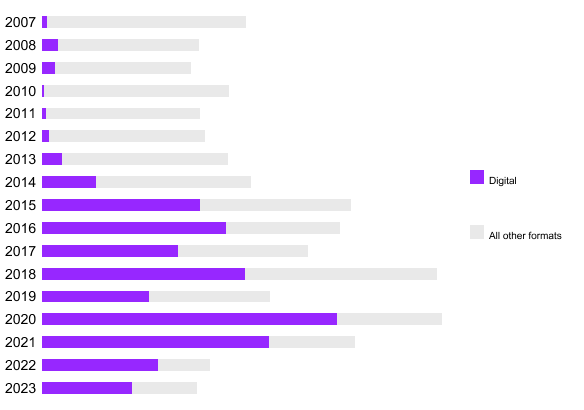
Of course, “digital” is actually made up of multiple streamers, plus downloads. This year was a tight one, with Netflix’s 16 films (26.7% of digital) narrowly claiming the crown from Amazon Prime on 15 (25%). Next were downloads on 13 (21.7%), before a small handful of other streamers filled out the rest: Disney+ with six (10%), MUBI with five (8.3%), Now on three (5%), and Apple TV+ on two (3.3%). That’s right, nothing in 2023 for iPlayer, nor ITVX, nor Channel 4, nor YouTube, nor any of the multitudinous other streamers that are available nowadays.
Overall second went, also as usual, to Blu-ray, with 31 films (30.1%). That’s up on last year, though doesn’t by itself totally cover the drop in digital.
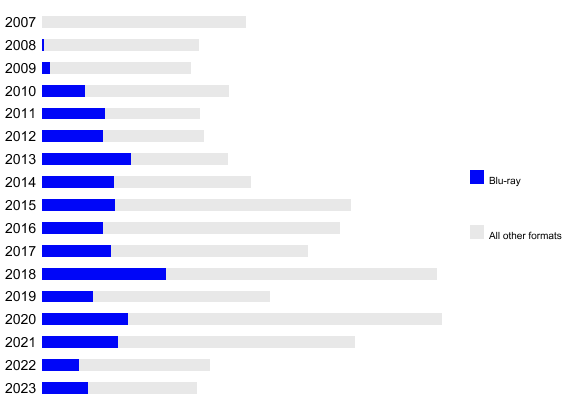
So where else have those lost digital percentage points gone? Well, DVD held steady on eight films. With my overall viewing down, that means it accounts for a slightly higher percentage — 7.8% in 2023 vs 7.2% in 2022. Hardly making the world of difference, that, is it? DVD has theoretically enjoyed a boost these last couple of years thanks to the Physical Media category of my Challenge, although in fact it hasn’t made that much of a difference (looking at the graph, the two Challenge years aren’t notably different to pre-Challenge years like 2016, 2017, 2019, and 2020). Spoilers: the Physical Media category is going away in 2024, so it’ll be interesting to see how DVD charts next year.

Our search for those lost digital percentage points finds perhaps its biggest culprit in cinema. I went four times this year — less than I’d hoped, but tied with 2020. It’s only 3.9% of my viewing, but if we’re talking about how percentage points have moved around, I guess those are all nabbed from digital. (For those who want the full maths: add cinema’s 3.9% to DVD’s 0.6% increase for 4.5% of streaming’s lost 11.1%. That leaves 6.6%, and Blu-ray went up by 8.6%, so… um, wait, what? Oh, I’m just confused now. Let’s abandon the pretence I know what I’m talking about, have a graph, and then on to something else.)

In 2022 I only watched one new film in 3D. I’d hoped to improve on that in 2023 (the general public may think 3D is dead, but it still has its fans — like me — and I’ve still got a 3D TV and plenty of unwatched discs), but I didn’t — in fact, I watched no films in 3D. Oh. Well, at least that’s an easy figure to improve upon… (In overall terms, I did watch two 3D titles this year, both Doctor Who ones. That too is the same as 2022, when my one new 3D film was supplemented by a 3D rewatch.)
As for the new high PQ standard, 4K Ultra HD, that fared significantly better, with 27 films in 2023 — up from 24 in 2022, even though I watched fewer films overall. Indeed, at 26.2% of my viewing, you could argue it’s 4K’s strongest year yet. (I watched 40 back in 2020, but that was only 15.2%.) Still, 1080p HD remains the standard overall, accounting for 62.1% of my viewing. Of course, sometimes the only option is lower quality, and so I still watched 12 films in SD. That’s my lowest raw number yet, and even as a percentage — 11.65% — it’s down on the last two years.

In terms of the age of films watched, it’s normally the present decade that tops the chart, although it typically takes a couple of years to assert that position. The 2020s got there for the first time last year, matching the 2010s record of doing it in the decade’s third year. No surprise, then, to find the 2020s in first place again, with 38 films (36.9%). Normally you’d then find the preceding decade in second place, but — for the second time in a row, and only the fifth time ever — that’s not the case. In fact, two decades bested it: for no immediately obvious reason, the ’60s are second with 15 films (15.5%); and, boosted by my noir-focused WDYMYHS selection, the ’40s are third with 10 films (9.7%). That leaves the 2010s in fourth place with just eight films (7.8%).
Every decade since the 1920s cropped up in my feature film viewing this year. That means the 1910s miss out for the first time since 2019, but the 1900s & earlier were represented by shorts, as they have been every year since 2020. I specify “and earlier” because one even came from the 1890s. Counting down the remaining decades, in joint fifth place we have last year’s #2, the ’80s, tied with the ’50s on seven films (6.8%) apiece. From there we’ve got the ’70s with six (5.8%), the ’90s with four (3.9%), the ’30s and 2000s each with three (2.9%), and finally the 1920s with just one (0.97%).
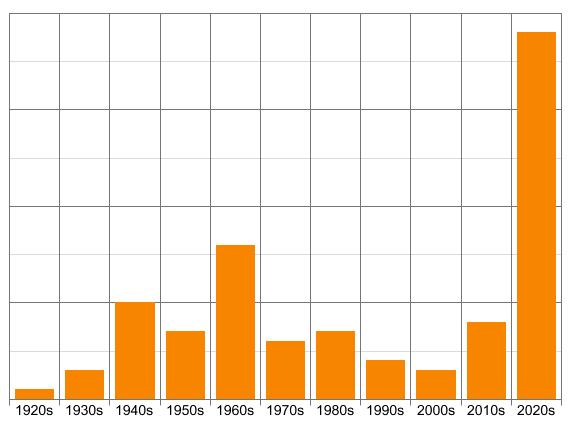
As well as watching older films, I’ve also tried to watch more films from around the world — in a relatively “hands off” way, that is. By which I mean, it’s not like I’ve disqualified US/UK productions from my Challenge, nor anything else particularly radical or concerted; I’ve just tried to, y’know, vary things. That approach means that, while the USA remains clearly the dominant country of production, with 60 films this year, its percentage has dropped significantly, to 58.3% — down from almost 73% last year, and well below the previous low, 67.6% in 2021. Meanwhile, the UK has actually gone up, with 33 films equating to 32.04%, its highest ever, over 2013’s 29.3%.
In total, there were 23 production countries in 2023 — up from 17 in 2022, which is good considering I watched roughly the same number of films. It’s fewer than in any year from 2014 to 2021, but I did watch a lot more films in that period. France came third for the third year in a row with 12 films (11.7%), Germany were fourth with 10 films (9.7%), Italy were fifth with nine films (8.7%), and Mexico had an uncommonly strong showing to reach sixth place with five films (4.9%). There were three each for Canada and Hong Kong, and two apiece for China, Cuba, Ireland, and Sweden. That leaves eleven other countries with one film each, including Japan, who I mention because they built up to a huge spike a few years ago, culminating in third place in 2018, but have tailed off again since, for no readily discernible reason.

Unsurprisingly, it’s a similar story with languages — although the UK and US combine here (along with various other countries, including foreign films where it’s spoken a significant amount) to leave me with 77 films in English. It remains by far the highest single language, but features in less than three-quarters of films in 2023 — 74.8%, to be precise — which is far down on last year’s obscene 92.8%, and well below the previous low, 2020’s 84.5%. Nonetheless, it’s a long drop to second placed French, featured in nine films (8.7%), which is only just ahead of Italian in eight films (7.8%) and Spanish in seven films (6.8%). In all, 16 languages were spoken in 2023’s viewing, slightly up from last year, but you’d have to go back to 2014 to find lower again. But, as I’ve said, I watched far more films per year in those years, so of course the number of countries and languages represented was higher.

A total of 89 directors plus seven directing partnerships helmed the feature films I watched in 2023, with a further seven directors and one partnership added by my short film viewing (one feature director also directed a short, as we shall see in a moment). No director had more than two features to their name this year, but those with two were Allan Davis (both from the Edgar Wallace Mysteries series), Dario Argento (if things had gone as planned, he would’ve had at least four), Eric Appel, Joselito Rodríguez, Kenneth Branagh (if rewatches counted, he’d have more), Mario Bava, and Roger Michell. It was Danny Boyle who was behind one feature and one short, while Dean Fleischer Camp helmed three shorts (the original Marcel the Shell with Shoes On trio) and George Albert Smith is credited with two.
For a few years now I’ve been charting the number of female directors whose work I’ve watched each year. This had been steadily improving, but fell back considerably in 2022, unfortunately. In 2023, I watched 12 films with a female director (11 with a woman directing solo, one where she was part of a duo with a man). Counting the shared credit as half a film, that comes out as 11.17% of my viewing. That’s actually my second highest percentage since I started monitoring this, but remains shockingly low considering that women make up a little over 50% of the population. I say that’s an industry problem, primarily — if more women were allowed to direct movies as a matter of course, I’d see more movies directed by women.
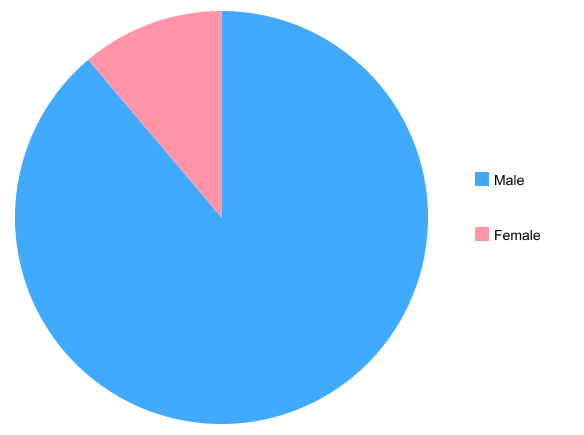
At the time of writing, just one film from my 2023 viewing appears on the IMDb Top 250 — that would be Oppenheimer at 68th. However, because that list is ever-changing, the number I have left to see has actually gone up, from 18 at the end of 2022 to 19 now — the first time that’s happened since I started tracking this a decade ago. One of those 19 films has only just inserted itself into the list though, so I presume it will speedily drop off (that tends to be what happens to new entrants). Still, even that would leave me with a net change of zero. Maybe my 2024 viewing will have more of an impact…

Talking of minimal impact, let’s move on to the disaster zone that is my progress with my “50 Unseen” lists — you know, the list I publish at the end of every year of 50 notable new films I missed that year, which I’ve continued to track my progress watching down the years. I went through a period where they helped to decide a lot of my viewing, and consequently I was constantly chipping away at every old list. Not so much nowadays. In fact, “not at all” might be more accurate: in 2023, I only watched 10 films across all 16 lists. I haven’t even watched that few from just the previous year (i.e. in this case, 2022) since I only watched eight from 2009’s list in 2010. To be precise, I watched six from 2022’s 50. That’s my second-worst ‘first year’ ever, beating only the four from 2008’s list that I watched in 2009. Eesh. The only reasoning I can offer for such a drop off is that I’m watching far fewer films than I used to, and more of them are older.
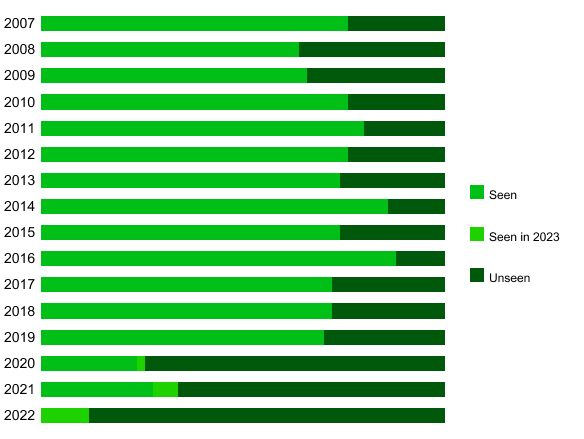
In total, I’ve now seen 523 out of 800 ‘missed’ movies. That’s 65.4%, the lowest it’s been since 2017. I was pleased to get it above 70% for the first time in 2018 and my aim had been to keep it up there, which I managed for the next few years. I’d like to get back there, but it’s unlikely to happen in 2023: I’d have to watch 72 films (from across all 17 years), which would be a new record. Considering I watch at least 100 (ish) films every year, hitting 72 seems theoretically possible, but only if I were to devote most of my viewing to only films from these lists. I won’t be doing that. Maybe I can achieve 70% in 2024… or 2025… Of course, the goal posts keep moving because the list increases by 50 titles every year (speaking of which, 2023’s 50 will be listed in my forthcoming “best of” post).
And so we reach the finale of every review, and thus a fitting climax to these statistics: the scores.
For the avoidance of doubt, this stat factors in every new film I watched in 2023, even those for which I’ve yet to publish a review (this year, that’s a ludicrous 95% of them — it was just 27% last year, although it was 98% in 2021). That means there are some where I’m still flexible on my precise score; usually films I’ve awarded 3.5 or 4.5 on Letterboxd, but which I insist on rounding to a whole star here. For the sake of completing these stats, I’ve assigned a whole-star rating to every film, but it’s possible I’ll change my mind when I eventually post a review (it’s happened before). Still, hopefully this section will remain broadly accurate (because I’m not going to come back to modify it!)
At the top end of the spectrum, in 2023 I awarded 17 five-star ratings (16.5% of my viewing) — a massive increase on 2022’s six (5.4%). Having last year asserted that my marking has become harsher as I’ve got older / more experienced, this year suggests that, eh, maybe not; although, historically, 16.5% is slap bang in the middle of the board (by which I mean: eight years had a higher percentage and eight years had a lower percentage). I’ve always been a relatively lenient grader and, to be honest, I see no reason why that should change — I just like films, ok?
At the other end of the spectrum, though perhaps indicative of the same thing, I gave zero one-star ratings — only the second time that’s ever happened, after 2011. I’m always stingy with them, feeling that the lowest-of-the-low should be reserved for things that are truly execrable, so in many respects it’s nice to have gone a whole year without watching anything so meritless.
My most commonly awarded rating was, as usual, four stars, which I gave to 43 films (41.7%). That’s down from last year, although together the top two ratings add up to 60 films in both 2022 and 2023 (and, remember, I only watched slightly more films last year, so it’s broadly equal). Slightly behind were the 37 three-star films (35.9%), while only having six two-star films means their percentage — 5.8% — is the lowest since 2011 (a year you may remember for its similar lack of one-star films).
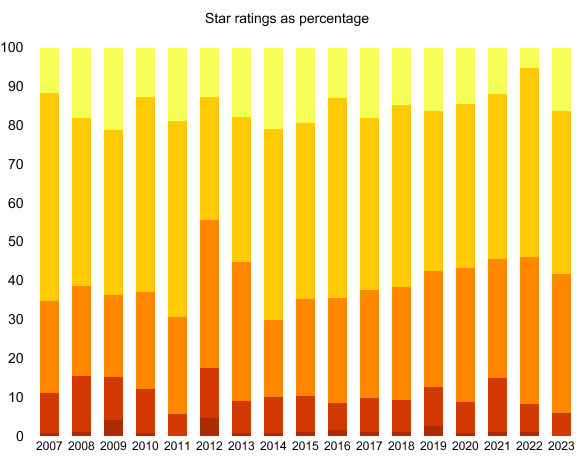
So, from all that we can calculate the final stat of the year: the average score for 2023. The short version is 3.7 out of 5 — the highest it’s been since 2018, which was the fourth year in a run of 3.7s. It bucks the trend, too, as 2019 and 2020 both averaged 3.6 before 2021 and 2022 hit 3.5. If we want to get more precise (and we do), we can add a few more decimal places and see the score comes out at 3.689. That makes 2023 the fifth highest scoring year ever — again, quite the turnaround from the last two years, which were both my second-lowest year ever at the time.
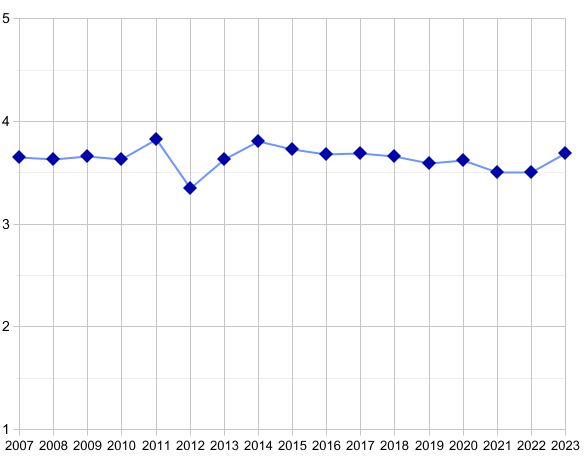
All of which said, as you can see from the graph above, my average score has remained pretty consistent across the years. There are no truly bad years, just weaker ones — or, in 2023’s case, stronger ones. Hurrah.
All that remains now for my review of 2023: which of those 103 films were my favourites?




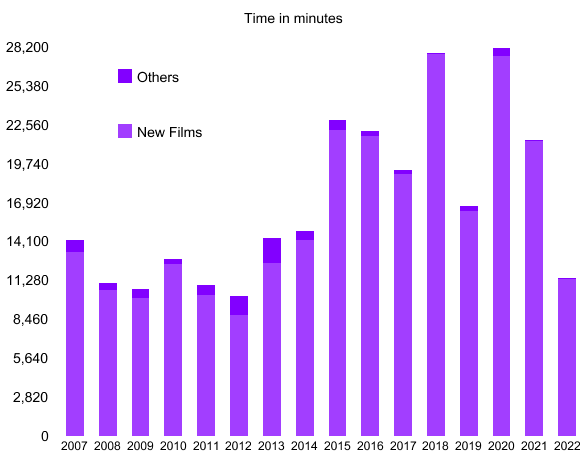
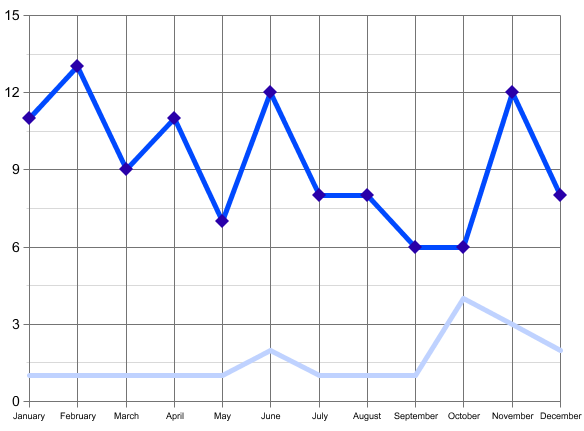


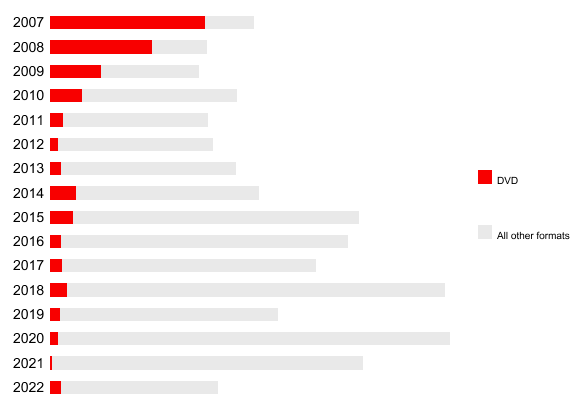

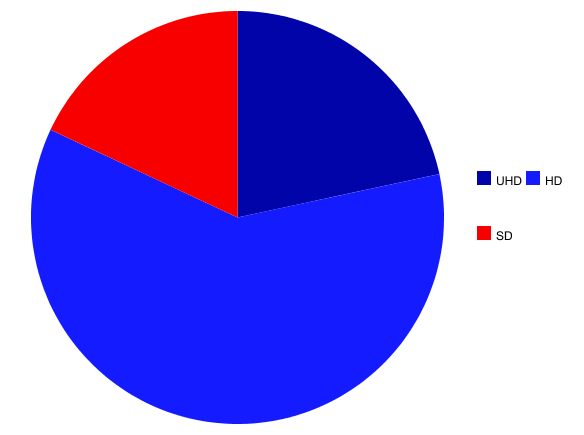
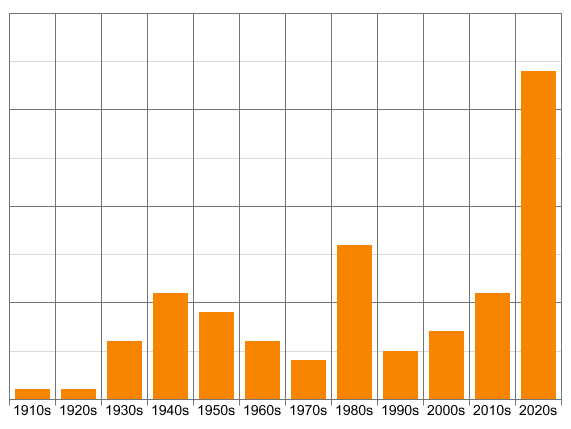




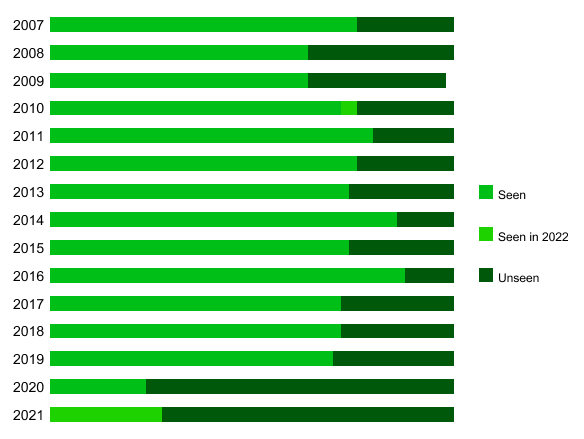
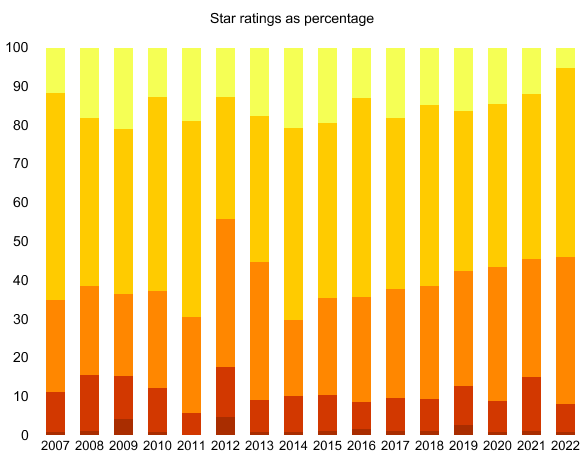
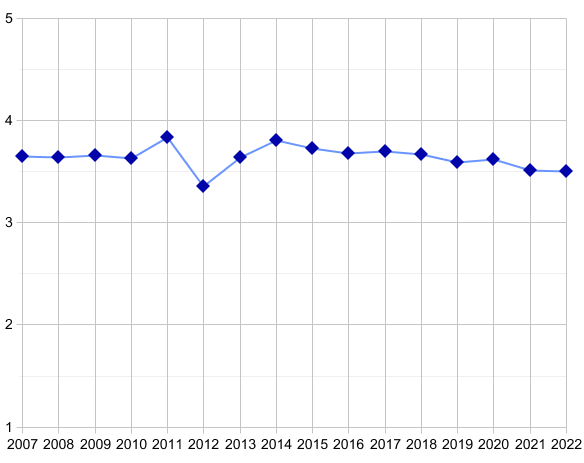
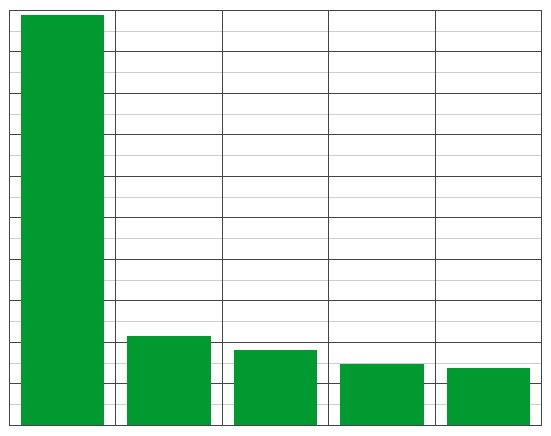



 Favourite Film of the Month
Favourite Film of the Month




















